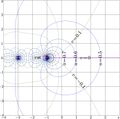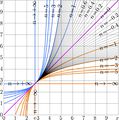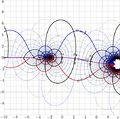Search results
Create the page "Integer" on this wiki! See also the search results found.

File:Amoscplot.jpg ...ument $x$; and, in general, this argument can take not only non–negative integer values, but also other real values ...the energy of the corresponding state of harmonic oscillator, at least for integer $x$ that can be interpreted as number of this state.(2,092 × 780 (147 KB)) - 08:29, 1 December 2018
File:Amosmap.jpg [[Complex map]] of function [[amos]], that determines (for integer values of its argument) the [[amplitude of oscillator function]]s, in more ...ition, in vicinity of the real $n$ (and, in particular, for non–negative integer $n$),(1,726 × 1,718 (396 KB)) - 08:29, 1 December 2018
File:Boyt.jpg ...n(z)=SuSin(n+AuSin(z)), where the number n of iteration has no need to be integer. ..(5,105 × 2,449 (1.17 MB)) - 08:31, 1 December 2018
File:Boyt100.jpg ...n(z)=SuSin(n+AuSin(z)), where the number n of iteration has no need to be integer. .. ...n(z)=SuSin(n+AuSin(z)), where the number n of iteration has no need to be integer. ..(3,473 × 1,646 (467 KB)) - 08:31, 1 December 2018
File:E1eiterT.jpg Thick curves correspond to the integer values of $n$(2,166 × 2,179 (1.03 MB)) - 08:34, 1 December 2018
File:Hermigaaplot.jpg For real (and, in particular, for integer) values of argument $n$, function [[amos]] can be expressed through functio(1,672 × 477 (247 KB)) - 08:37, 1 December 2018
File:Nembraplot.jpg happen to be necessary for implementation of the non-integer iterates of the [[Nemtsov function]],(361 × 1,286 (77 KB)) - 08:44, 1 December 2018
File:Sinplo1t100.jpg For the evaluation at non-integer $n$, the representation through the superfunction [[SuSin]] and the Abel fu(4,469 × 2,352 (1.31 MB)) - 08:51, 1 December 2018
File:Sinplo2t100.jpg For the evaluation at non-integer $n$, the representation through the superfunction [[SuSin]] and the Abel fu(4,469 × 2,352 (1.62 MB)) - 08:51, 1 December 2018
File:Tetsheldonzoo.jpg thick lines correspond ot the integer values.(4,337 × 4,317 (1.73 MB)) - 08:54, 1 December 2018- For given complex number \(b\), called "base", and given integer number \(n\), called "number of Ackermann", function \(A_{b,n}(z)\) is call and, for integer values of base and argument, even earlier.10 KB (1,534 words) - 06:44, 20 July 2020
- for non-negative even integer values of the argument, it represents the amplitude of the oscillator funct For non–negative integer values of the argument,6 KB (883 words) - 18:44, 30 July 2019
- It is called [[Hermite number]]; originally, \(H_n\) is defined only for integer \(n\).6 KB (770 words) - 18:44, 30 July 2019
- ...efers to the attempt to suggest a holomorphic function such that its non–integer iterate cannot be constructed as a holomorphic function. While the pretenti In this case, the number \(n\) of iterate has no need to be integer.7 KB (1,319 words) - 18:46, 30 July 2019
- ...n for [[SuNem]], the asymptic can be written as follows. For some positive integer \(M\), let For some fixed integer \(M\!>\!0\),9 KB (1,441 words) - 18:45, 30 July 2019
- ...value of argument. However, the number of these iterates has no need to be integer. In this expression, the umber \(n\) of iteration has no need to be [[integer]]; sin cam be iterated even complex number of times.5 KB (761 words) - 18:48, 30 July 2019
- while \(m\) is integer parameter. Then, \(\ell\) is assumed to be non–negative integer number.3 KB (352 words) - 18:45, 30 July 2019
- In applications, function Binomial is often used for positive integer values of the first argument and non–negative values of the second argume This property can be used for evaluation of Binomial for integer values of the arguments.3 KB (393 words) - 18:43, 30 July 2019
- If \(N\!=\!2^n\) for some integer \(n\), then, there exist efficient numerical algorithms for evaluation of t Let \(N\) be large integer, integer power of 2.5 KB (721 words) - 18:44, 30 July 2019
- ...n(z)=SuSin(n+AuSin(z)), where the number n of iteration has no need to be integer. .. ...n(z)=SuSin(n+AuSin(z)), where the number n of iteration has no need to be integer. ..7 KB (1,031 words) - 03:16, 12 May 2021